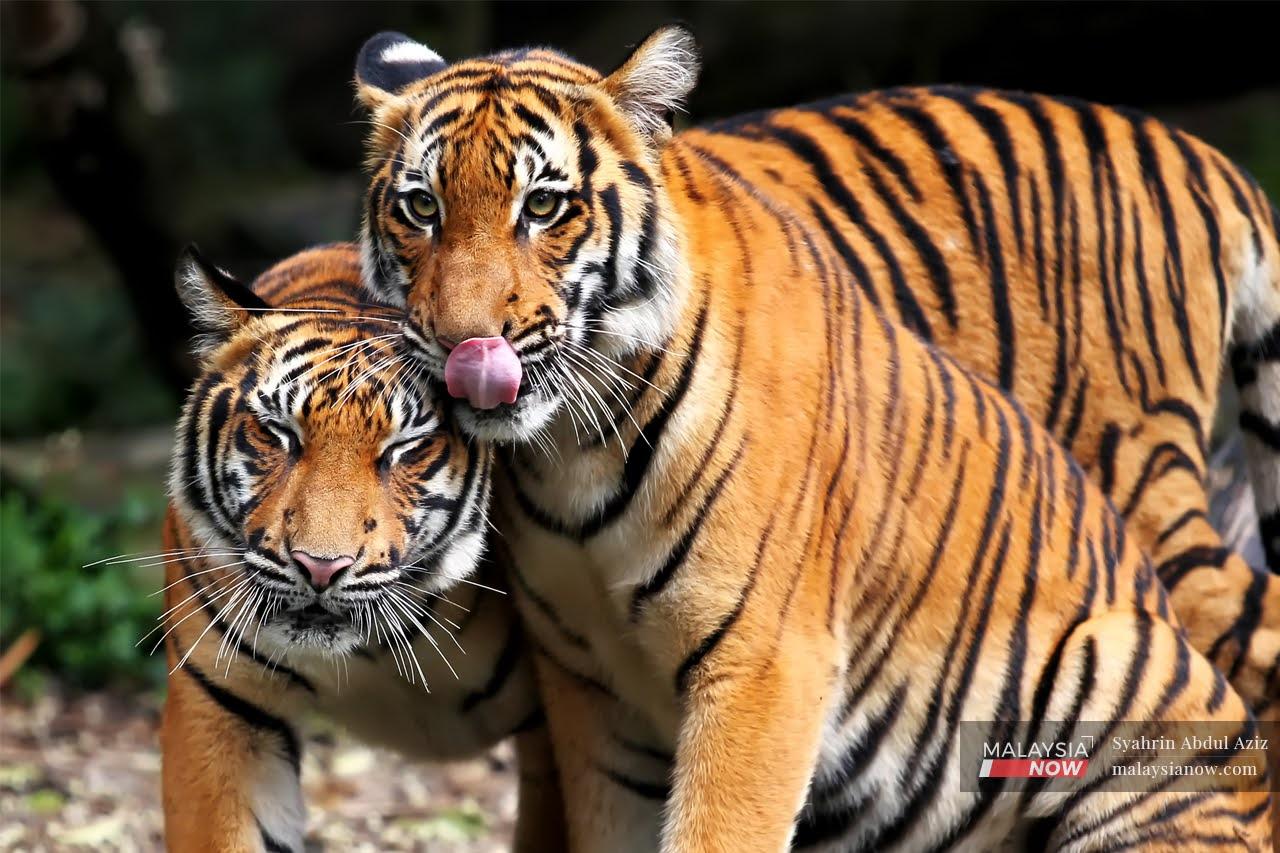The Malayan tiger, from national icon to national shame?
With fewer than 200 remaining in the wild, the Malayan tiger is rapidly drawing close to extinction.
Just In
The Malayan tiger adorns the country’s coat of arms and is celebrated as a national icon.
It is also the animal adopted as the logo of the national car and the name of Malaysia’s football team.
The face of the tiger is featured in many other brands as well, from the country’s oldest bank to a much-loved traditional ointment, trusted for generations.
But vanishing in the open forest at an alarming rate, the Malayan tiger may soon be reduced to just that – a symbol.
With fewer than 200 remaining in the wild, the Malayan tiger is now part of a “red list” kept by the UK-based International Union for Conservation of Nature.
“Soon you will only be able to see tigers in rehab centres and zoos.”
The list offers the most comprehensive information source on the status of animals and other species facing extinction.
An environmental activist says not only are Malaysian states to blame for destroying the forests where tigers live, there are no effective legal remedies to arrest the tiger’s decline.
“Our government forestry acts are all outdated,” Shariffa Sabrina Syed Akil tells MalaysiaNow.
“If you destroy the forests, you are killing the tigers. Soon you will only be able to see tigers in rehab centres and zoos.”
She says that despite being protected under the Wildlife Conservation Act, Malayan tigers are likely to face extinction in the wild soon as forests are cut down and strict measures have yet to be imposed on poachers.
As well as losing its natural habitat, the Malayan tiger is under constant attack by the merciless illegal wildlife trade.
The Department of Wildlife and National Parks (Perhilitan) operations are always catching poaching gangs in national parks across the country.
Many of the poachers are locals who also act as guides for foreign gangs entering Malaysian forests in search of tigers and other endangered animals.
Even the hefty fine of half-a-million ringgit and five years’ imprisonment for those convicted of illegal hunting are seen as not enough deterrents.
“We have proposed that punishment be revised to a maximum fine of RM1 million with 15 years in prison,” Perhilitan’s director-general Abdul Kadir Abu Hashim tells MalaysiaNow.
Shariffa agrees the punishment for poaching is too lenient.
“Loggers have opened too many balak routes through the forests for poachers.”
She also said corrupt government officials are at the root of the problem.
“The Thai government applies a shoot-to-kill order for all poachers. So, the poachers come to Malaysia instead,” says Shariffa, who heads the Association for the Protection of the Natural Heritage of Malaysia, or Peka.
Even the hefty fine and imprisonment for those convicted of illegal hunting are seen as not enough deterrents.
She said poachers usually get away without any punishment here.
“The remaining Malayan tigers are running towards Thailand as the Thai government is stricter in their preservation and conservation efforts.”
The government is now setting up a National Tiger Conservation Centre in Lanchang, Pahang.
The conservation centre, which is expected to be completed by April 2021, aims to breed tigers in captivity and then introduce them into the wild with a view to repopulating the forest.
But Shariffa is not convinced with the solution.
“Conservation centres are not the original habitat of the tigers. It will be like a zoo.
“And what happens if the breeding increases? Where are we going to release them as our forests are so rapidly shrinking?”
Subscribe to our newsletter
To be updated with all the latest news and analyses daily.
Most Read
No articles found.
